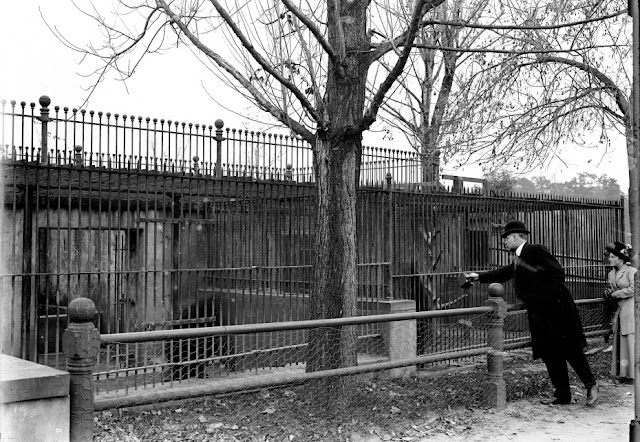By MessyNessy
As a Parisian, I’ve learned a lot about the second time the German army occupied the French capital during the Nazi invasion of WWII. But what about the first time the Germans took hold of the city of Paris? One forgets they managed it twice. The winter of 1870-1871 was a traumatic time for Parisians, an ordeal that saw the city sustain more damage over just a few months than in any other conflict in history. And yet, it’s one that seems to have almost vanished from collective memory– perhaps for a few very good reasons…
A few key dishes to look out for…
Consommé d’Elephant → Elephant soup.
Goujons Frits – Le Chameau rôti à l’Anglaise → Fried Camel Nuggets
Le Civet de Kangourou → Kangaroo stew.
Côtes D’Ours roties sauce Poivrade → Bear Chops with Pepper Sauce
Cuissot de Loup, sauce chevreuil → Haunch of Wolf with Venison Sauce
Le Chat Flanqué de Rats → Cat flanked by rats.
La Terrine d’Antelope aux Truffes → Antelope terrine with truffles
Oh, and lest we forget the stuffed donkey’s head as the hors d’oeuvre. This menu was cooked and served by the great Parisian chef, Alexandre Étienne Choron at one of the fanciest restaurants in Paris once upon a time, Voisin, located on Rue Saint Honoré.
By now in its fourth month, the siege of Paris had brought the population to near starvation. Napoleon III, a man of astoundingly terrible judgement, had infamously declared war on Prussia over some he-said-she-said, alleging the Prussian emperor had insulted him. (It actually makes modern politicians seem like saints).
 |
| Bismarck with Napoleon III after his capitulation |
Prussia’s prime minister Otto von Bismarck with a strong and obedient army at the ready, was all too happy to go to war and suggested shelling Paris to ensure the city’s quick surrender. The King of Prussia, said to be a chivalrous man, didn’t like that idea, so instead it was decided that the capital would have to be starved into surrender.
In a letter from the French painter Manet to his wife during the siege, he wrote: “There are cat, dog and rat butchers in Paris now, we eat nothing but horse when we can get it at all.”
The animals at the Jardin des Plantes zoo were next. The only animals spared were the monkeys (presumably because it would feel too much like cannibalism), the lions, tiger and the hippos– allegedly because they were deemed too unsanitary to consume. Along with the zoo’s only two elephants who had once been hugely popular with the Parisian crowds, Castor and Pollux, the rest of the animals were shot, killed and sold to butchers, where the likes of Chef Choron would have his pick of the most exotic beasts.
Read the full article at:






